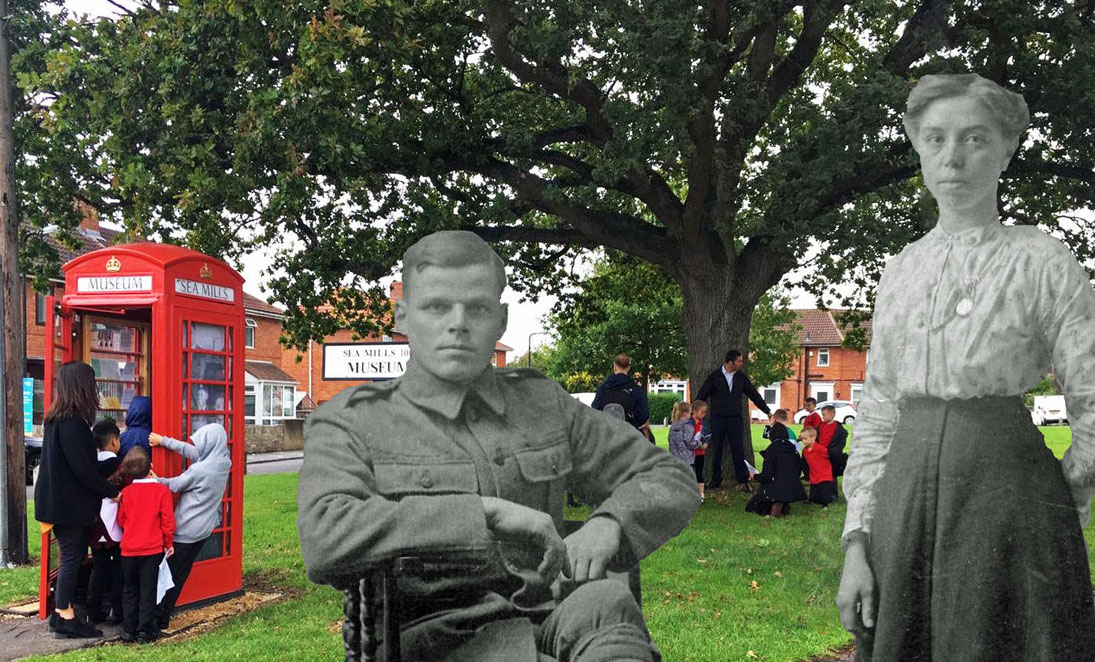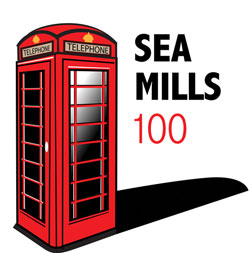Number 55 Trym Side – remembered by Janet Scott
I realised recently that I am probably the only person alive now, who can remember this house the way it was in the 1950 onwards, and therefore probably very much way it was in the 1920’s.
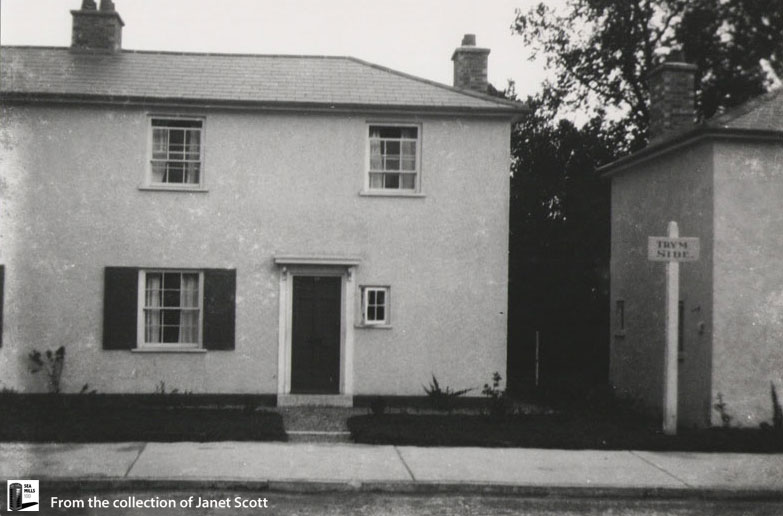
We travelled by train to Bristol from Paddington to Temple Meads Station, carrying our brown leather suitcases (cases did not have wheels in those days). From the station, we walked down to the main road and then caught a bus to Sea Mills. We got off the bus in Shirehampton Road, and then walked in the same direction as the bus, turned left into Mead Way, then into Trym Leaze*. As we turned into Trym Side, Nanny and Grandpy’s house was facing us. They were probably looking out of the window and the kettle would have been put on whew we appeared.
The house was built in 1922 as one of the many ‘Homes for Heroes’ which were built for soldiers coming back from fighting in WW1. It had a grass verge outside and a gate into the front garden and a path to the front door.
Inside the wooden front door, the stairs which went up to the 3 bedrooms faced you. The toilet was on the right. A door ahead led to the scullery, where all the cooking and washing was done. A door on the left led into the living room. This room went from the front to the back of the house with sash windows each end, and the windows had several panes of glass top and bottom. A sash window worked on a sash (or rope) which ran through a wooden casing inside the frame. When the rope broke the window would be difficult to open and lopsided and if both ropes broke the top window could fall if it wasn’t locked as nothing was holding it up. Then the sash would have to be replaced and for this the wooden casing would have to be removed and then tacked back after the sash was replaced.
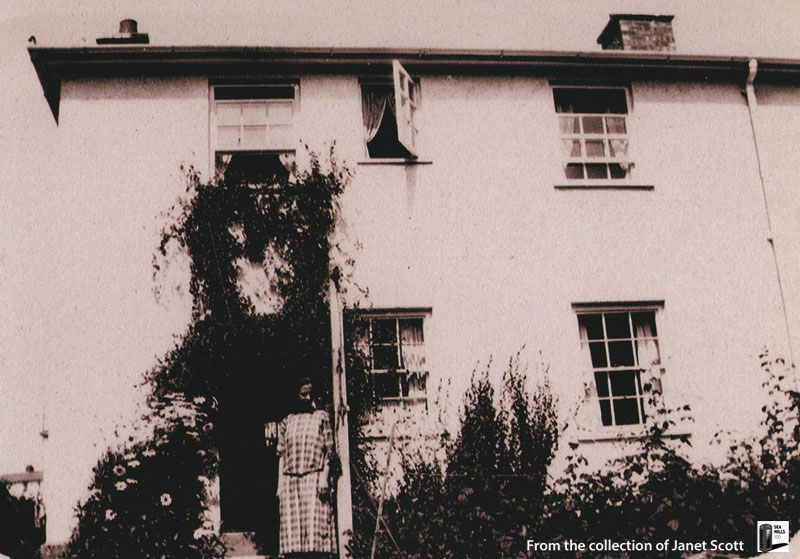
There was an open coal fire in the living room, in front of which was a brass fender, and fire irons – a shovel, brush and poker, also a coal scuttle. Every morning after the fire had been lit the night before, the ash had to be cleaned out of the grate. Shovels of ash went into a bucket followed by some ash being swept out. This was all put onto the garden. When a fire was lit, a copper kettle way placed on it to heat the water for tea. My Nan also used to hold a piece of bread on a long handled toasting fork to the fire to toast it.
On the left of the fire, in the alcove there were cupboards which went from floor to ceiling. In there was a sewing basket containing needles, pins, scissors, darning wool, cards of hooks and eyes, cards of metal press studs, cotton on wooden cotton reels, a hand made needle case and pin cushion. There were also skeins of wool and balls of wool and knitting needles. I often had to sit with a skein of wool on my outstretched hands while it was wound into a ball.
At the far end of the room on the same wall as the fire there was a huge mahogany bookcase and next to the window a display cabinet made by my great grandad, who was a cabinet maker. In front of the window at the back was a big mahogany dining table and six chairs. The cabinet is at my house. The chairs are still in use. On the wall opposite the fire was an ebony piano which had musical instruments carved into two panels on the front. There were big squashy armchairs with big squashy cushions covered in a variety of flowery fabric. The cushion covers were made by my Nanny, as were all the curtains. On the wall were framed photos, and on the floor a red square carpet which left a border of linoleum showing round the edges. The red carpet was cleaned by a damp cloth being brushed across it to form small clumps of hair and dirt.
Off the living room a door led to the scullery. (I don’t ever remember it being called a kitchen). The sink was under the window with just a cold water tap and a wooden draining board to the side. Beneath the draining board was a ‘copper’ and this was hidden from view by a curtain on a wire which was in front of it.
On Monday the copper was pulled out for the washing, which seemed to go on all day. The water in the copper was heated and then topped up with more hot water as we went through the day, then when it came to rinsing time sometimes a ‘blue bag’ was added to the water for rinsing ‘the whites’.
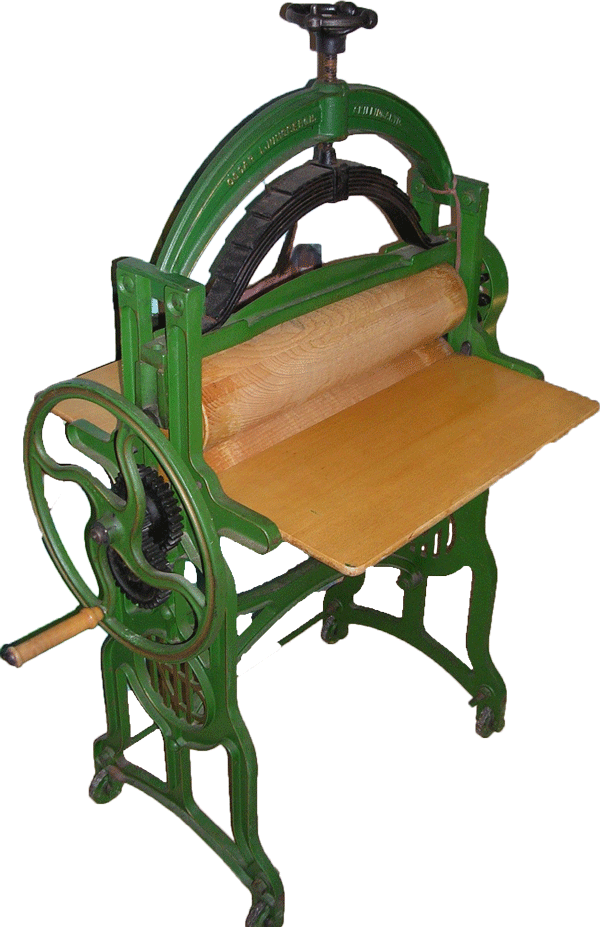
After all the washing and rinsing, the mangle would be pulled out from the cupboard called ‘the coal hole’ and the clothes would be put through the mangle. This was a machine which had two rollers and the clothes would be squeezed between the rollers to get out as much water as possible. This was done by turning a handle to turn the rollers, it was very hard work and extremely noisy.
Left: A washing mangle (image: wikimedia commons)
The ‘coal hole’ was a cupboard off the scullery. Another cupboard to the left of the coal hole and near the back door, was the pantry. A tin bath which hung on a hook on the wall was also kept in the coal hole. Most of the food way kept in the pantry. Glass bottles of milk stood on the cold stone floor and in the summer earthenware coolers were soaked in cold water and then put over the milk. There was a wooden meat safe with a metal grid on the door to allow air in and keep flies out.
In the back corner of the scullery was a gas cooker. There was a marble slab for rolling out pastry. Bread way kept in a round enamel tin with a lid and sliced on a round wooden board. Tea was always drunk from a cup and saucer.
After the washing had been washed, rinsed and wrung it was pegged with wooden pegs onto a long line which ran right down the garden and was attached to two metal poles (in concrete). A wooden prop which was a pole with a forked end would then hook under the washing line and lift the washing up to blow in the wind. Washing day was hard work.
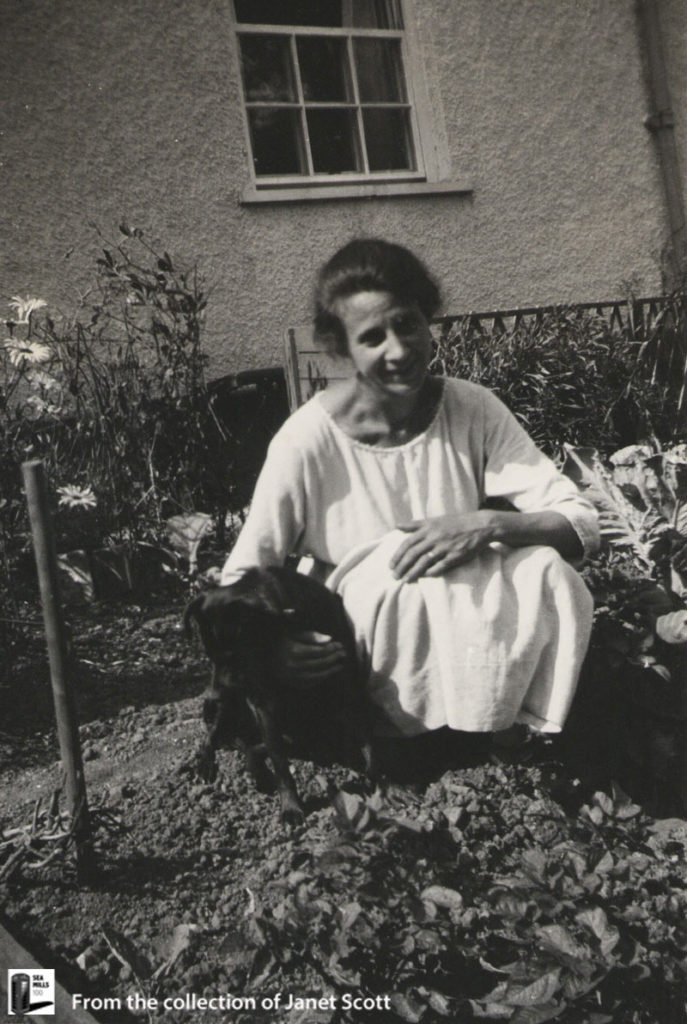
I remember the garden in the 50/60’s being almost completely used for growing produce. There were potatoes, tomatoes, runner beans, beetroot, parsnips, cabbages, lettuce (including caterpillars), brussels sprouts, blackcurrants, redcurrants, gooseberries, blackberries, raspberries, as well as a cherry tree and three plum trees. During WW2 chickens were kept at the bottom of the garden so there were always eggs to eat.
Left – Charlotte Caines in the garden at no 55
I do not remember much about the toilet and washing. I think there was just a wash hand basin and the room was cold as well as the water, so as little amount of time as possible was spent in there. The biggest bedroom upstairs had a fireplace but I do not ever remember a fire being lit there. In the mornings in winter there would be ice on the insides of the windows. When the bed sheets became worn in the middle they were cut in half and rejoined so the worn part was now at the sides. Pillows and eiderdowns were filled with feathers. Furniture was big and brown, a big wardrobe, chest of drawers and dressing table with a mirror and a stool.
We walked a lot, to the riverbank for mushrooming, to The Progress for lemonade and crisps with with blue paper containing salt, and to the shops. On Saturday at about five o’clock we all had to be silent whilst Grandpy checked his pools coupon. Beer was delivered by George’s on a horse-drawn cart. Nan would stand by with a bucket and shovel in the hope that some manure would be deposited in Trym Side which she could then put on her tomatoes.
My holidays with my grandparents in Trym Side were very happy and I remember them with great affection.
The Caines family at number 55
Charlie Caines and Charlotte married at Bristol Registry Office on 13th June 1922, went on honeymoon to Ilfracombe and moved into 55 Trymside on their return with Charlotte’s daughter Evelyn.
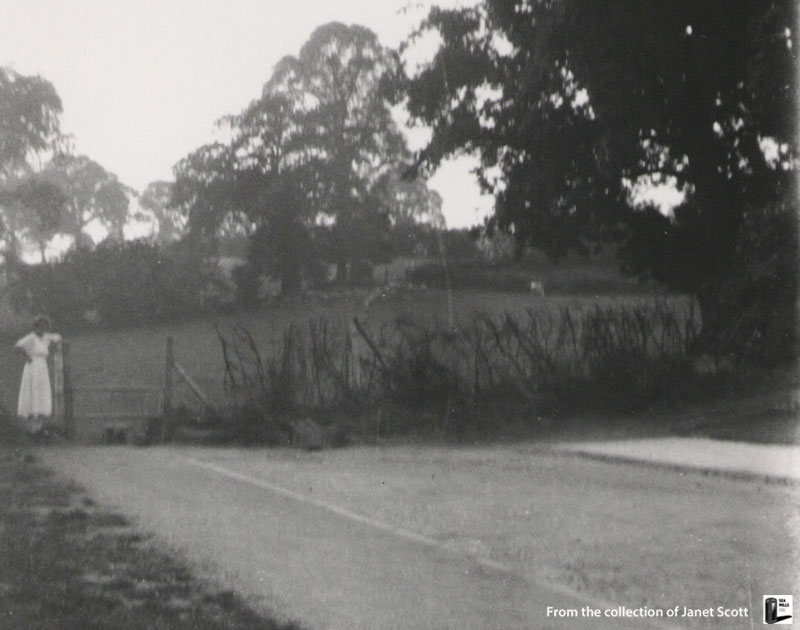
There were only 4 more houses beyond number 55 and then a stile into a field where houses are now.
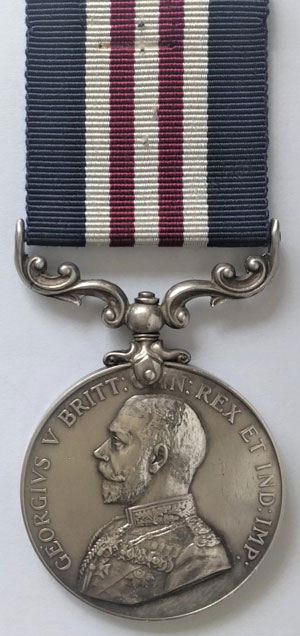
Charlie had served in WW1 in the Somerset Light Infantry and the Machine Gun Corps, and was awarded a Military Medal.
image: wikimedia commons
Charlie was born in 1893 and grew up in Priory Road, Shirehampton with his parents – also Charles, his mother Eleanor and his younger brother Edward.
Before WW1 Charlie worked for the Anglo-American Oil Company and returned there after the war. His father also worked for the company which later became Esso. The Esso brand was introduced to the UK in 1934.
Evelyn was born in Shepherds Bush in 1914 and was eight when she came to live in Bristol with her mother and stepfather. She attended a private school in Shirehampton, walking there every day, and then between 1925 and 1929/30 attended St Andrew’s School in Montpelier.

Between 1930 and 1934 Evelyn attended Bristol Commercial College in Park Street, the worked for Lever Brothers in Victoria Street, Metal Agencies, Baldwin Street and the Charity Commission, Ryder Street. Her name does not appear on the 1939 register for Trym Side because she was evacuated to Morecambe by the Charity Commission. She did return to Trym Side and to work in Bristol for the Inland Revenue in 1940.
In 1946 Evelyn married at St Edyth’s Church, Sea Mills. The reception for the very small group of guests was held at 55 Trym Side.
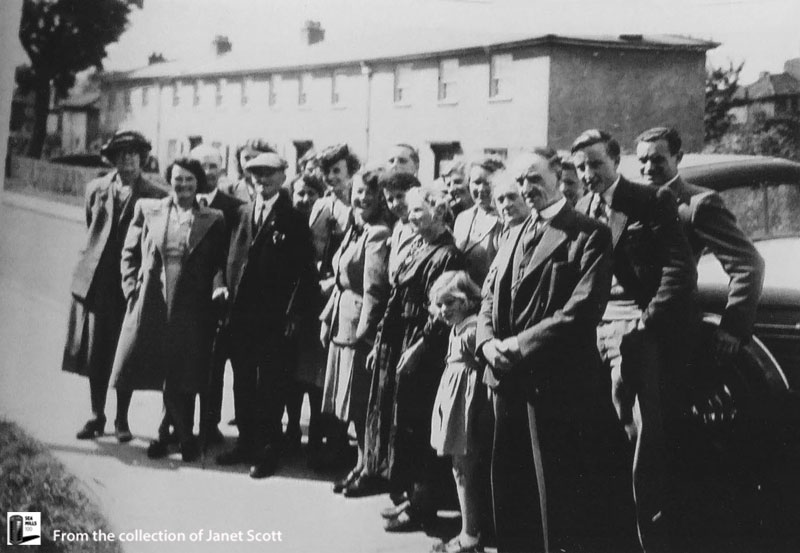
Charlie retired after 48 years at Esso aged 63 and died in 1963 aged 70. He is buried at Shirehampton.
Charlotte continued to live at 55 Trymside until her death in 1981 aged 89. Much of her married life in Sea Mills, apart from looking after Charlie and Evelyn was spent in handicrafts, making clothes, rugs, curtains and cushion covers, knitting and crochet, even making petticoats from parachute fabric! She spent hours in the garden turning almost all of it over into growing vegetables and fruit and continuing to keep chickens, (which had first been acquired during WW2) at the bottom of the garden. She is also buried in Shirehampton.
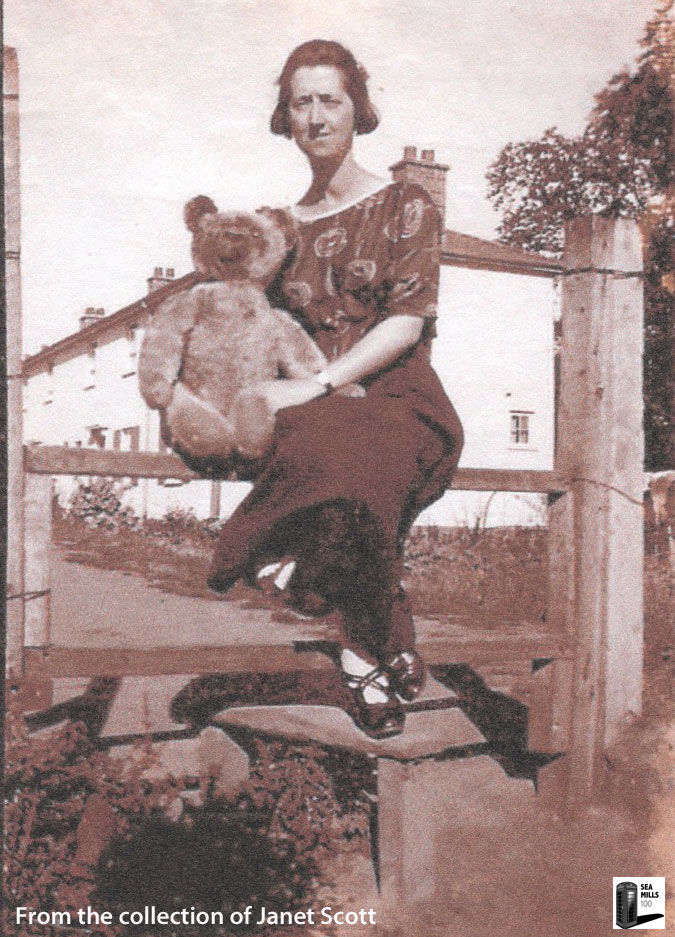
This picture, taken in around 1925 is of May Rickett, Charlotte’s best friend. She didn’t live in Sea Mills but her son Cyril is listed as being at 55 Trymside in the 1939 register.
May is sitting on the stile which led into the fields when there were only 4 houses beyond number 55. She would have been looking out onto fields with the houses behind her. She is holding Evelyn’s teddy bear.
*Trym Leaze was originally called Grove Leaze and was probably still called Grove Leaze when Janet first visited. It was eventually changed to prevent confusion with Grove Leaze in nearby Shirehampton.
